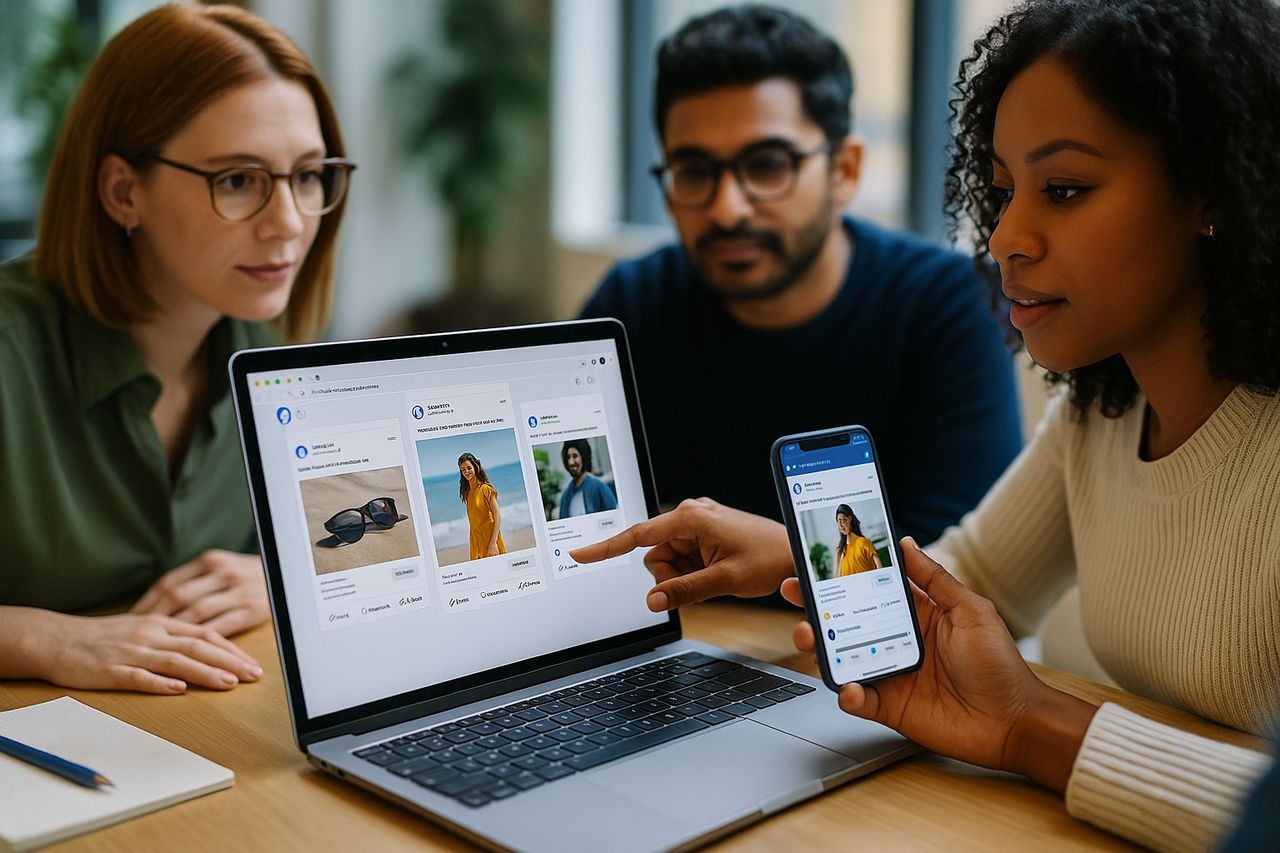TL;DR:
- Decide your model, reseller or fulfillment partner.
- Lock scope, pricing, and SLAs in your contract.
- Set up access in Business Manager, keep data secure.
- Use a clean build process, pixel plus Conversions API.
- Report under your brand, track margin and quality.
White labeling means you sell Facebook ad services under your brand, while a partner or internal team does the work. Your client sees your logo on decks, dashboards, and emails. You control the relationship, price, and support.
Agencies use white label delivery to scale, fill skill gaps, or cover time zones. It works for one client or a full book of business. The key is clear rules, tight handoffs, and consistent quality.
Choose your model
1) Reseller model. You resell a partner’s managed service. They plan, build, and optimize. You handle sales and account care.
2) Fulfillment partner for overflow. You run core accounts. A partner covers extra work or niche tasks, like catalog ads or advanced testing.
3) In-house white label team. You staff contractors who deliver under your SOPs. You keep full control, but you must train and manage.
Pick based on your pipeline, profit goals, and risk. Start simple, then add complexity once your system runs well.
Pricing and scope
Keep pricing simple. Pick one of three paths.
- Flat retainer. One price for a clear package. Good for small budgets.
- Tiered by ad spend. Fee rises with spend bands. Common and predictable.
- Hybrid. Base fee plus a small percent of spend. Balances effort and upside.
Define scope in plain terms:
- Channels covered, Facebook and Instagram placements.
- Campaign types, prospecting, remarketing, catalog, Advantage+ if approved.
- Monthly builds, new ads, tests per month, and reporting format.
- What is extra, creative production, video edits, UGC sourcing, landing pages.
Add SLAs:
- Response time, for example within 1 business day.
- Build time, for example 5 business days from asset handoff.
- Reporting time, for example weekly or monthly by the 3rd business day.
Contracts and compliance
Use a short MSA and an SOW. Include:
- White label terms and non-solicit clauses for your clients and your partner.
- Data processing and confidentiality.
- Ownership of ad accounts, pixels, and creative files.
- Refund policy and termination window, for example 30 days.
Add a simple intake form and checklist so you start clean every time.
Access and asset setup
Keep a standard setup to avoid delays.
Business Manager access
- Ask your client to add your business to their Business Manager.
- Request access, do not transfer ownership, to the ad account, pixel, catalog, and Instagram account.
- Use roles with the least access that still lets you work.
- Enable two factor for all users.
Tracking
- Install the pixel on the site with a tag manager or native plugin.
- Set up the Conversions API to improve event quality.
- Define standard events and custom conversions that match goals.
- Verify the domain and configure aggregated event measurement.
Creative and brand
- Collect a brand kit, logo files, fonts, and voice notes.
- Ask for top products, lifetime value, margins, and stock rules.
- Build a swipe file with past winners and learnings.
Quality control and margin
You must protect both results and profit.
- Track gross margin per client monthly, revenue minus partner fees and tools.
- Cap rounds of edits in scope. For extra rounds, quote a small fee.
- Set a minimum ad spend for new clients so your fee fits the work.
- Keep a shared issues log and fix root causes.
Common pitfalls to avoid
- No clear owner. Assign one account lead who makes calls.
- Messy access. Use request access, not take ownership, to avoid lockouts.
- Weak tracking. Pair pixel with the Conversions API for stronger signals.
- Creative drought. Keep a rolling content calendar and weekly shoots.
- Scope creep. Point to your SOW when new tasks show up.
Onboarding checklist
Use this quick list during kickoff.
| Area | Checklist |
| Access | Business Manager, ad account, pixel, catalog, Instagram |
| Tracking | Pixel live, Conversions API configured, events mapped |
| Brand | Logo pack, colors, voice, legal claims to avoid |
| Offers | Hero products, price points, bundles, lead magnets |
| Metrics | Primary KPI, guardrails, weekly target, stop loss |
| Creative | Three concepts, sizes, copy angles, CTAs |
| Reporting | Dashboard link, schedule, contact list |
When to bring a white label partner
- Your team is at capacity for 60 days or more.
- Client needs a skill you do not staff yet, like catalogs or shops.
- You want coverage in a new region or language.
- You want to pilot a new offer with low fixed costs.
Start with a 90 day trial. Review results and client happiness at day 75. Scale if you hit goals and the partnership is smooth.
Advanced tips
- Map profit by ad set for lead gen. Adjust bids to protect CPL.
- Build a creative backlog. Shoot new hooks every week.
- Use rules to cut clear losers, for example pause if spend hits 2 times target CPA without a conversion.
- Tag UTM parameters by campaign and concept so you can read site data fast.
- For shops and catalogs, sync stock daily and exclude low margin SKUs.
Why it matters
White label delivery lets you grow without hiring too fast. You keep the client bond and the brand. A clear SOP protects results, profit, and trust. With the right partner, you can scale and keep quality high.
Sources:
- Meta Business Help Center, Business Manager and ad account permissions, https://www.facebook.com/business/help/, accessed 2025-10-13
- Meta for Developers, Conversions API overview, https://developers.facebook.com/docs/marketing-api/conversions-api, accessed 2025-10-13
- AgencyAnalytics, What Is White Label Marketing and How It Works, https://agencyanalytics.com/blog/white-label-agency, accessed 2025-10-13
